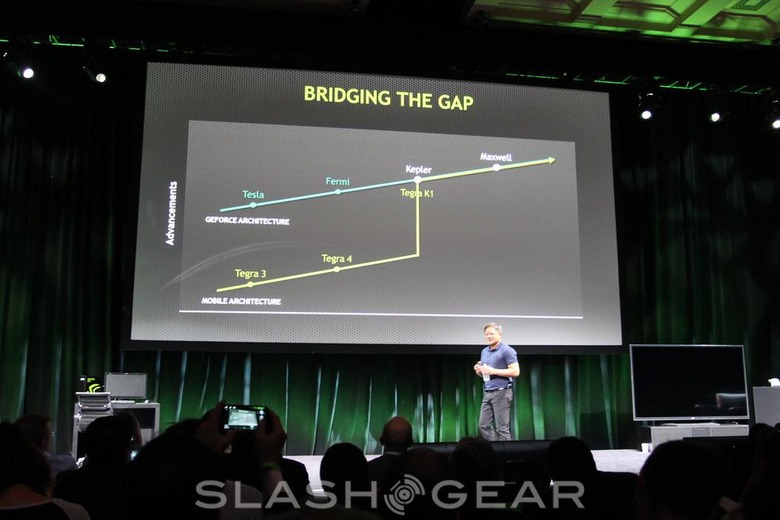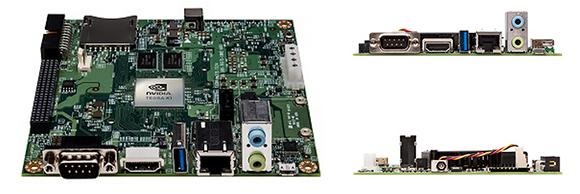NVIDIA Jetson TK1: $192 for CUDA-powered supercomputing
There's a relatively tiny device being prepared by NVIDIA right this minute with the name "Jetson" in its title. This device is very similar to the NVIDIA Jetson we saw in 2013 – almost exactly one year ago to the week – but here NVIDIA is being much more up-front about it. Here you can jump right in and buy.
The Jetson TK1 brings the same CUDA VisionWorks developers have been using on the desktop to mobile, with coders able to simply load their apps on the $192 "mobile supercomputer". Inside the compact box there are 192 CUDA cores for a total of 326 GFLOPs of performance and direct support for the VisionWorks SDK. That's good for feature-detection and tracking, object recognition and tracking, and 3D scene interpretation.

If that 192 CUDA cores sounds familiar, you're likely in-the-know about what TK1 stands for – Tegra K1. This device runs with a Tegra K1 SoC, complete with Kelper GPU (with CUDA) and 4-PLUS-1 CPU architecture: that's four CPU cores and a single low-power core made for low-power tasks.

This device also works with the following bits and pieces:
• 2 GB x16 memory with 64 bit width
• 16 GB 4.51 eMMC memory
• 1 Half mini-PCIE slot
• 1 Full size SD/MMC connector
• 1 Full-size HDMI port
• 1 USB 2.0 port, micro AB
• 1 USB 3.0 port, A
• 1 RS232 serial port
• 1 ALC5639 Realtek Audio codec with Mic in and Line out
• 1 RTL8111GS Realtek GigE LAN
• 1 SATA data port
• SPI 4MByte boot flash
Users can also work with the following signals with an expansion port: DP/LVDS, Touch SPI 1x4 + 1X1 CSI-2, GPIOs, UART, HSIC, and i2c. Through the Jetson TK1 support page you 'll have access to Linux for Tegra, CUDA SDK demo samples, and a litany of other toolkits.

Through the NVIDIA GPU Computing Embedded System forums you'll find that to own an NVIDIA Jetson TK1 unit, you'll have to sign up as a CUDA developer first. Have at it!
